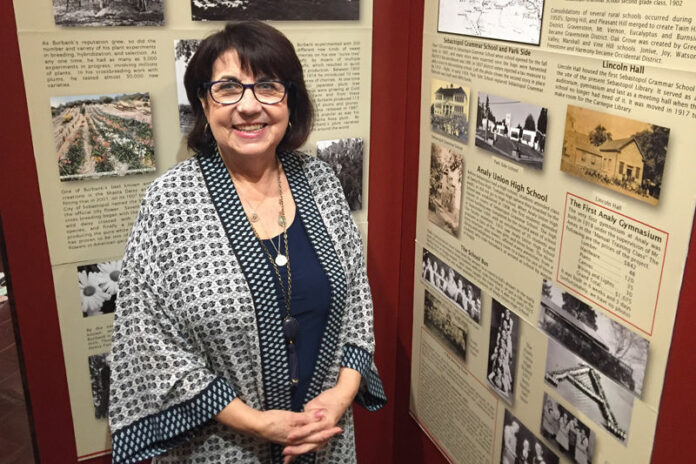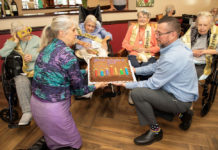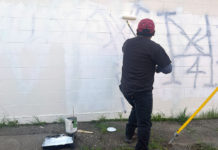The West Sonoma County Historical Society has appointed Donna Pittman as the new director of the West County Museum in Sebastopol. She is taking over from Interim Director Gloria Roberts.
Pittman was born in Sebastopol at the old Palm Drive Hospital in 1947, went to public school in town and was a history and literature double major at Sonoma State. She became a middle school history teacher — “a job I adored” — before moving into administration.
“I followed my heart with my love of history,” Pittman said. “You know, there’s always that one person in every family — the old soul that likes all that kind of stuff.”
Pittman went on to be vice principal at Brookhaven and a principal at Park Side, before finishing her career in education as assistant superintendent for programs at a school district in Marin County.
Despite her Sebastopol roots, Pittman just recently moved back to town. She and her husband John, who owns Roger’s Pool in Sebastopol, lived in Coffey Park for 25 years before the Tubbs Fire tore through their neighborhood in 2017, destroying their house and so many others.
She joined the historical society in part as a way of recovering from the trauma of losing her home.
“It was actually my sister who encouraged me to get out a bit more when we were recovering from the fire,” Pittman said. “She was right. As soon as I started getting involved, I just became so excited.
“I was thinking about this yesterday. If I could pinpoint the defining moments in my life, I’d have to say that the decision to teach history and losing of my house put me right here,” she said, gesturing around the book-lined, wood paneled office at the museum.
The West County Museum is one of two projects run by the Western Sonoma County Historical Society. The other is the Luther Burbank Experiment Farm on Bodega Avenue. As director of the museum, Pittman works for the board of the historical society.
What does a director at such a small, local museum do?
“That’s what I’m trying to figure out,” Pittman joked, before saying that she is responsible for the overall direction of the museum, including the activities and the committees. “I’m responsible for the policies and the organization and the fundraising.”
Pittman, who was just appointed in December, said right now she’s trying to learn as much as she can from the long-time volunteers who’ve been working at the museum all these years.
“I’ve just been listening and listening and chatting with them about everything that they are doing and have been doing. After all, these people have been here so much longer than I have,” she said.
Asked about her plans for the museum, she listed “do no harm” and “preserve our history,” but also said she wants to move the museum from the status of “surviving to one of thriving.”
“For the most part, I see my role as an enabler and an enhancer,” she said.
Pittman said she’s been impressed by the museum’s talented volunteer staff — amateur local historians who work on researching, organizing and archiving, as well as curating the museum’s exhibits.
“The people here have done such a wonderful job keeping this museum, which is really a jewel on Main Street, going,” she said.
As talented and committed as the current volunteers are, everyone involved admits that both the museum and the historical society could use more members and volunteers. Recruiting more volunteers is one of Pittman’s goals.
In addition, she said she’d like to “put procedures in place that give them more time to just concentrate on the parts of their volunteering that they really love to do, because you don’t want to lose great volunteers.”
Another one of her goals is to help the museum build relationships with the broader community, particularly the local schools.
“Educational programs — that’s my bailiwick,” she said. “I’d like to introduce local schools to the work of the historical society, as well as the farm and the museum.”
“I’ve already contacted the junior high. Women’s History Month is coming up, and we have this exhibit on strong, local women,” women that the exhibit’s curator and Sonoma West History columnist Mary Dodgion called “trailblazers.”
That show ends in the middle of March, and then the museum will be hosting a Suffragist exhibit, celebrating the 100th anniversary of women getting the right to vote.
“We’re going to have a big presence in the Apple Blossom Parade this year. We’ll all be marching in costume,” Pittman said, noting that she’s on the lookout for the perfect vintage hat.
In part because of her experience with the Tubbs Fire, she said she’s also interested in doing some work at the museum around resilience and fire safety.
“We’re digitalizing things and trying to find ways to save our archives out in the box car” — the rusty orange train car in the parking lot behind the museum.
“I walk around now and I think, ‘Oh gosh, what if?’ What if we had fire come this far into town? A lot of small museums are beginning to talk about that, like ‘How do we protect what we have? What’s our emergency plan?’”
A volunteer gave Pittman a tour of the box car recently, where a lot of the archives are stored, including past issues of The Sebastopol Times, the forerunner of Sonoma West Times & News.
“He opened the door, and the impact of it all just hit me. At first it just looks like old things,” she said, but each old thing has a story that is connected to the larger story of west county.
“It’s gives me goosebumps when I think about the responsibility,” Pittman said.
50.3
F
Healdsburg
March 16, 2025








